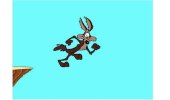OneCharlieTango
Cleared for Takeoff
- Joined
- Dec 21, 2018
- Messages
- 1,165
- Display Name
Display name:
OneCharlieTango
I’m going out on a limb to say the OP is looking at the ground too close to the nose. Once you round out, look to the end of the runway, and expect to get the exact same sight picture you had on the takeoff roll.




